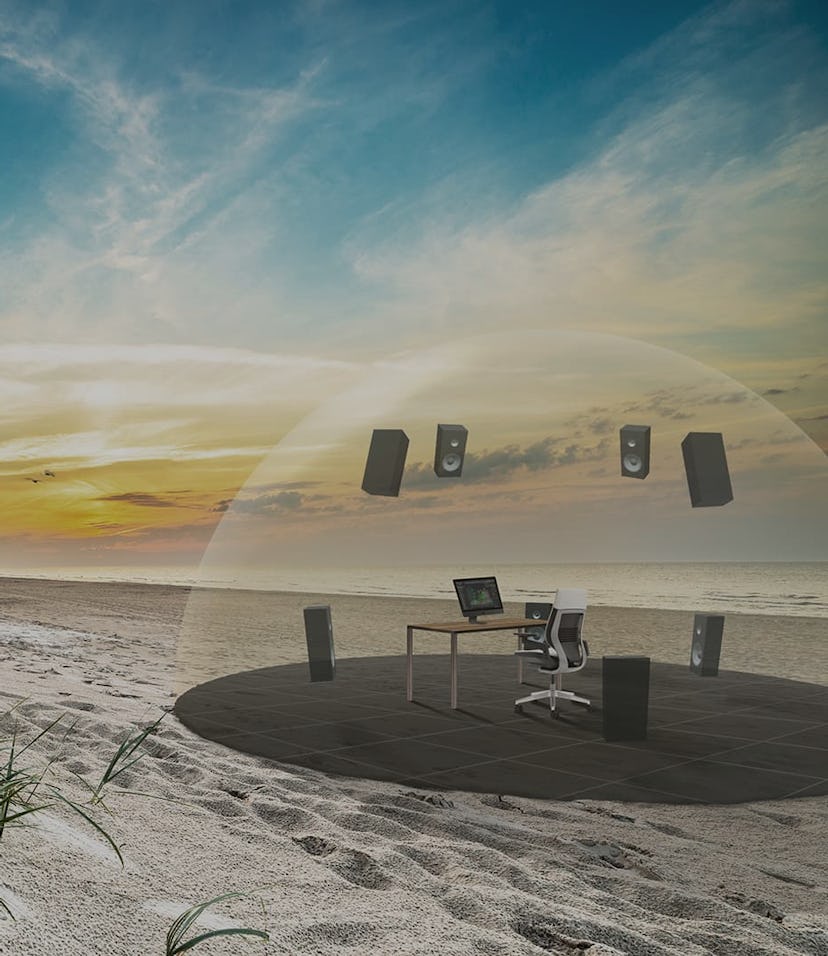Tech
Spatial wants to make 3D audio experiences interactive
The company unveiled its first suite of products today, and they're impressive for sure. But will anyone buy into this AR audio dream?

Augmented reality innovation is, for the most part, being conducted in the visual realm: Snapchat filters that put a dancing hotdog in your living room, for example. But AR audio experiences are finally gaining some traction, too — or, at least, that’s what Spatial is betting on.
Spatial is hoping to bring augmented reality audio experiences to the mainstream. The California-based startup just unveiled its first product, which is really more of a service and a concept than anything tangible. When it comes to augmented audio experiences, that’s pretty much par for the course.
The Spatial Reality engine’s most impressive innovation is the way in which it uses “objects” to render soundscapes. It’s a dynamic system; rather than simply looping an audio track for ambience, Spatial invites people to actually interact with the soundscape.
For the most part, Spatial is going to be marketing its audio-creation platform to businesses. The goal is to bring the technology to public spaces — at a theme park, for example, or to create an immersive display at the local zoo. It’s an ambitious idea with the very real potential of carving out an entirely new market.
Sound isn't static — The idea of so-called “3-D audio” is not new or groundbreaking. Spatial knows this. The company’s not trying to sell us on sound as an immersive experience. Rather, Spatial is all about dynamic soundscapes. The company’s system has three parts: a sound-creation app, an AR engine, and an output system.
The app, called Spatial Studio, is a three-dimensional environment where users can design scenes and identify dynamic objects. It runs on iOS, but it’s hefty for a mobile app, with lots of precision control for everything from scaling controls to adaptive physics. The Studio app is used for both creation and real-time interaction with a soundscape.
Then there’s the Spatial Reality engine, which runs on a series of computers (the number of which varies based on how large the scene is — one M1 Mac mini can run up 128 channels). The engine connects to the dynamic objects defined in the Studio app, as well as to any other input sensors.
Output can be completed with just about any set of speakers, though, of course, the quality of those speakers will greatly affect the overall soundscape.
Who’s going to buy this? — There’s no doubt Spatial’s system is innovative. Immersive audio technology has largely been static as of late. The ability to create experiences where visitors can become part of the soundscape — not just listening to, but affecting it — is huge.
The larger question, then, is whether or not it’s viable as a product. Technological innovation for its own sake is wonderful, but we’re still living under capitalism. Spatial won’t be able to succeed unless it sells.
We know users enjoy immersive audio experiences. In fact, they enjoy them so much so that spatial audio has made its way into our gaming headsets and our AirPods. Three-dimensional audio isn’t even expensive, at this point.
What Spatial is selling is much, much more specialized. As The Verge points out, similar offerings do exist, albeit without Spatial’s most innovative features, the fine-tuning available for dynamic objects and other interactivity. But what local zoo is going to spend its budget on Spatial’s system — not to mention the time needed to actually create scenes with it — when a static soundscape works just as well?